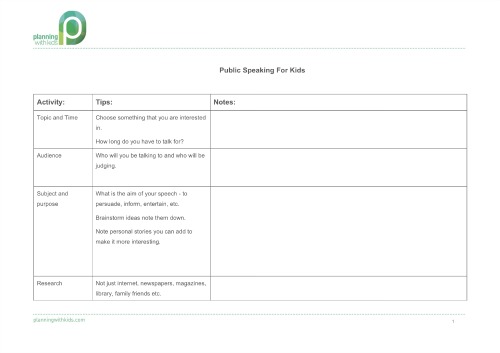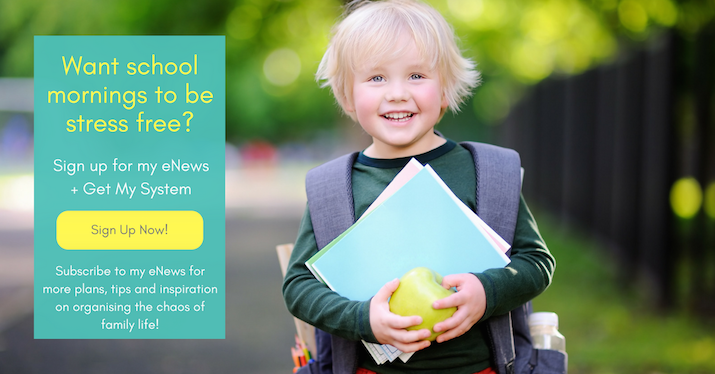
It is speech competition time at our kids’ primary school. Each child in every year level must write and present a speech to their class. The top couple are then chosen to present the same speech in front of the whole school and winners are chosen for each year level.
The speeches are written and practiced at home. This year I created a template for the kids to help make a start on their speech. The template not only helps them plan out the content for their speech, but gives them tips on how to define the purpose, research and practise their speech.

You can download the template we used by either clicking on the image above or here – Public Speaking Guide For Kids.
I used this template with all three kids – prep, year three and year five. The level of guidance needed by each child varied and I naturally I spent the most time with the six year old as this is the first time he has had to write and present a speech.
Not every element of the template will necessarily need to be completed and depends on the topic. For example the prep child chose “Kids have fun when….” from the list of topics for his class. This topic requires no research to be done as he is an expert in knowing how kids have fun!
The kids may also need more room than for the “middle” section, depending on how long their speech is to be. We simply turned over the page and wrote on the back.
Public Speaking Tips For Kids – A Checklist
I have listed below the elements the template covers:
- Topic and Time: Choose something that you are interested in.
- How long do you have to talk for?
- Audience: Who will you be talking to and who will be judging.
- Subject and purpose: What is the aim of your speech – to persuade, inform, entertain, etc. Brainstorm ideas note them down. Note personal stories you can add to make it more interesting.
- Research: Not just internet, newspapers, magazines, library, family friends etc.
- Structure: Ask yourself the question – ‘At the end of the speech I would like my audience to…….
- Beginning: Brief, capture the attention of the audience and establish the subject and purpose of the speech. Don’t just restate the topic. Add your personality and make it unique, many others may be talking on the same topic.
- Middle: Sets out your ideas, shares your research, includes examples to support your topic. For your time limit work out how many points / paragraphs you can include. Work on having a powerful statement to lead into each new point / paragraph.
- End: Short statement relating back to the topic and sums up the subject and purpose of the speech. Make it brief, but memorable. Try including a memorable line that the audience can take away with them. Memorise your conclusion, so your last couple of sentences can be delivered with confidence and with full eye contact with the audience.
- Practice: By yourself first. Time it and edit your content so it first with the time restraints.
- Palm Cards: Then make palm cards for key points only. Keep cards to a minimum and number them.
- Dress rehearsal: Practice using palm cards, first by yourself, then either in front of family or even video your self.
Are school mornings stressful for you?
Are any of these scenarios familiar to you:
- Are your school mornings currently a harder version of Groundhog Day?
- Do you sleep a bit longer than planned in the mornings then rush to get you and the kids ready?
- Do you wake up to a house that is already in a state of mild chaos?
- Do the kids end up buying their lunches more than you planned because you ran out of time or food?
- Do you drop the kids off at school with you feeling frazzled and the kids grumpy?
Then my super simple system will help revolutionise your school mornings! Sign up to my E-news and receive my guide here.

